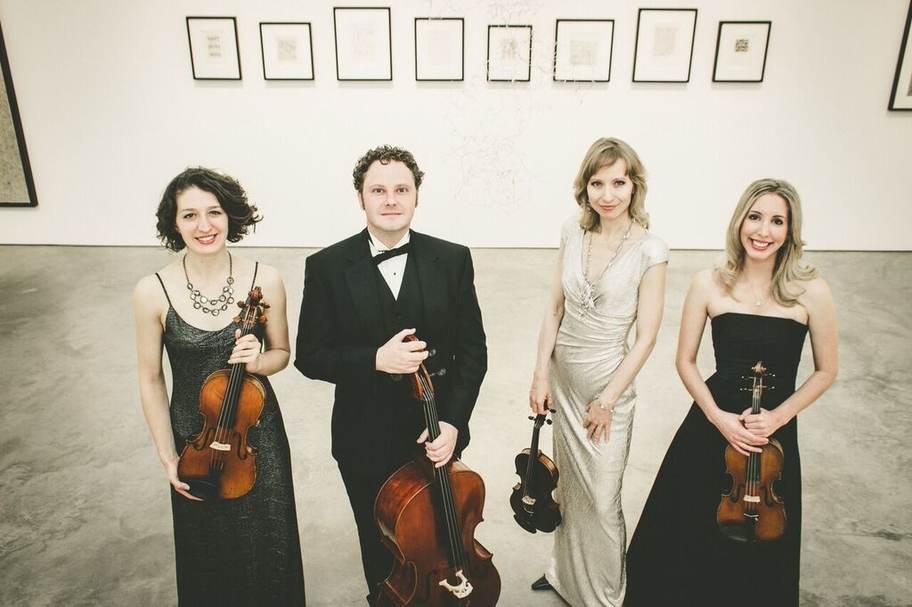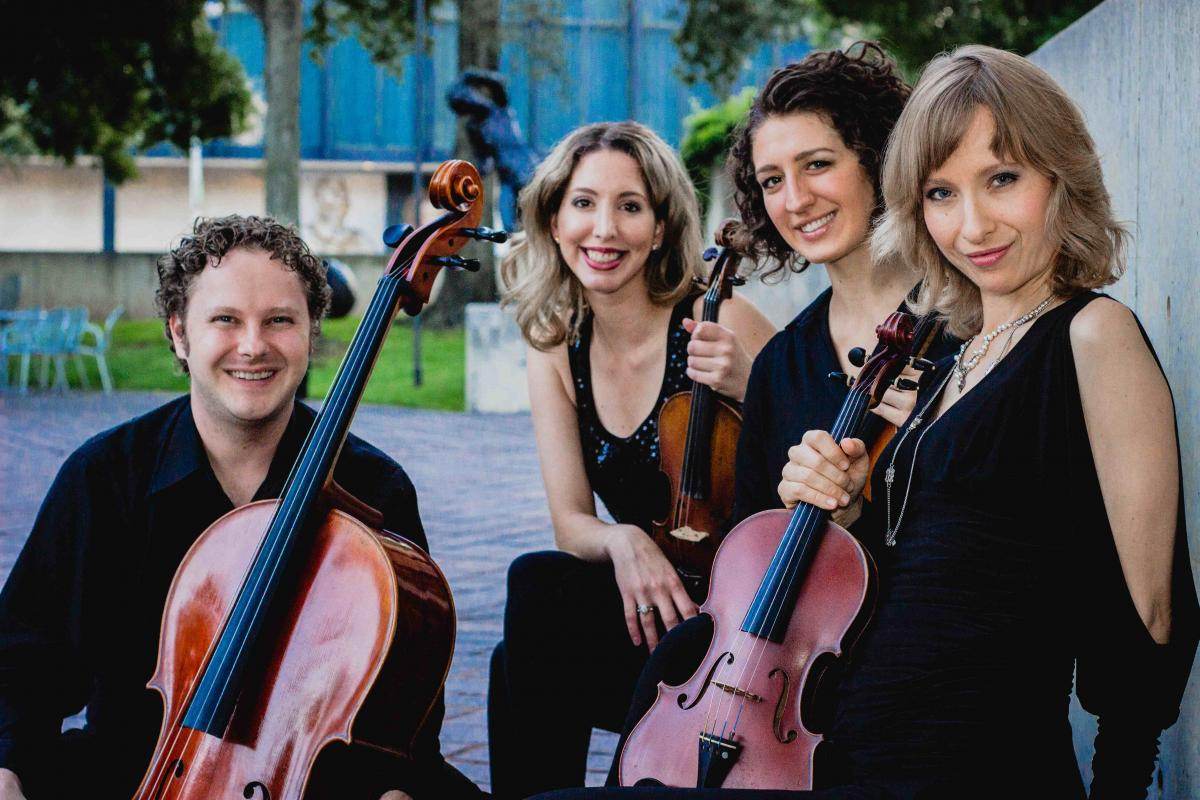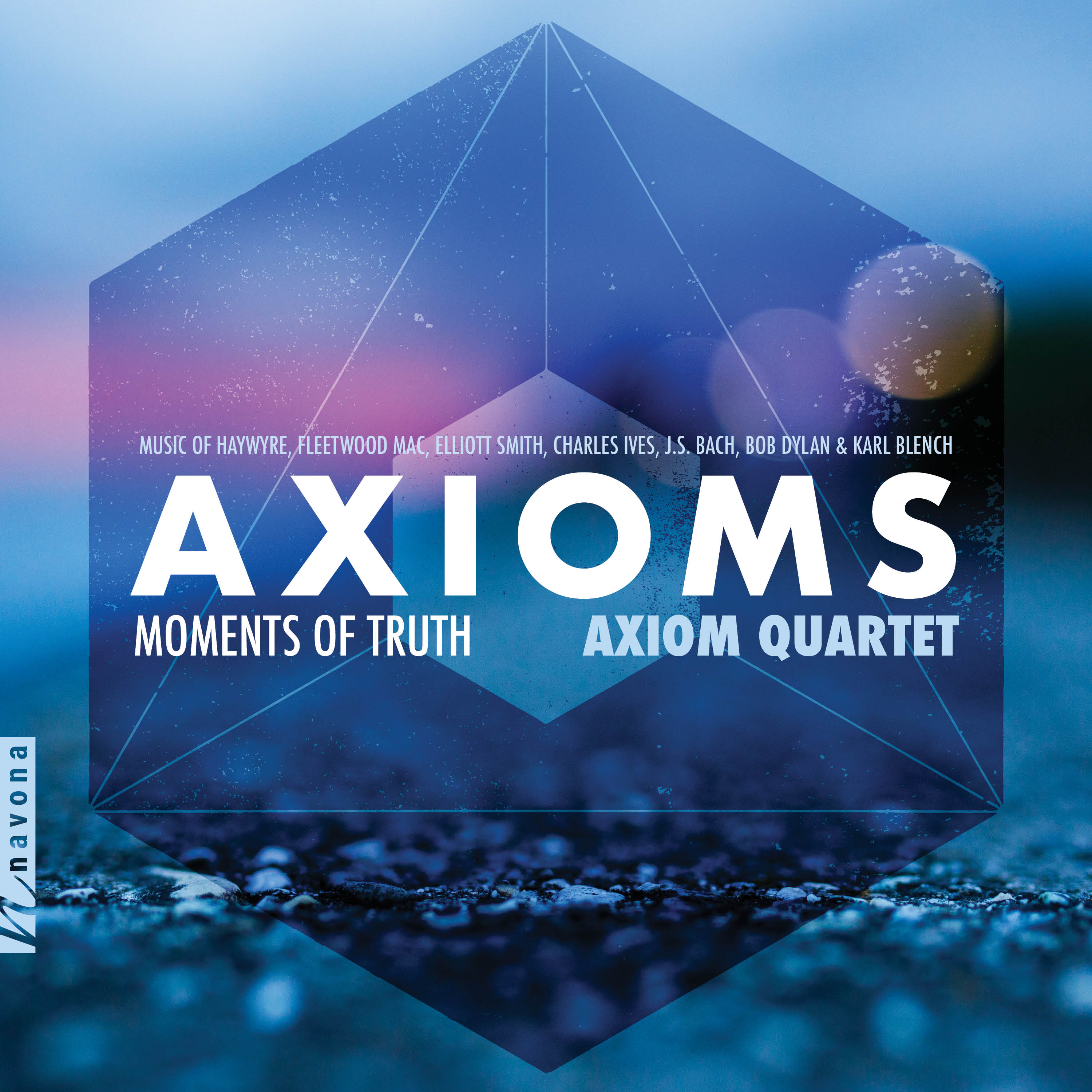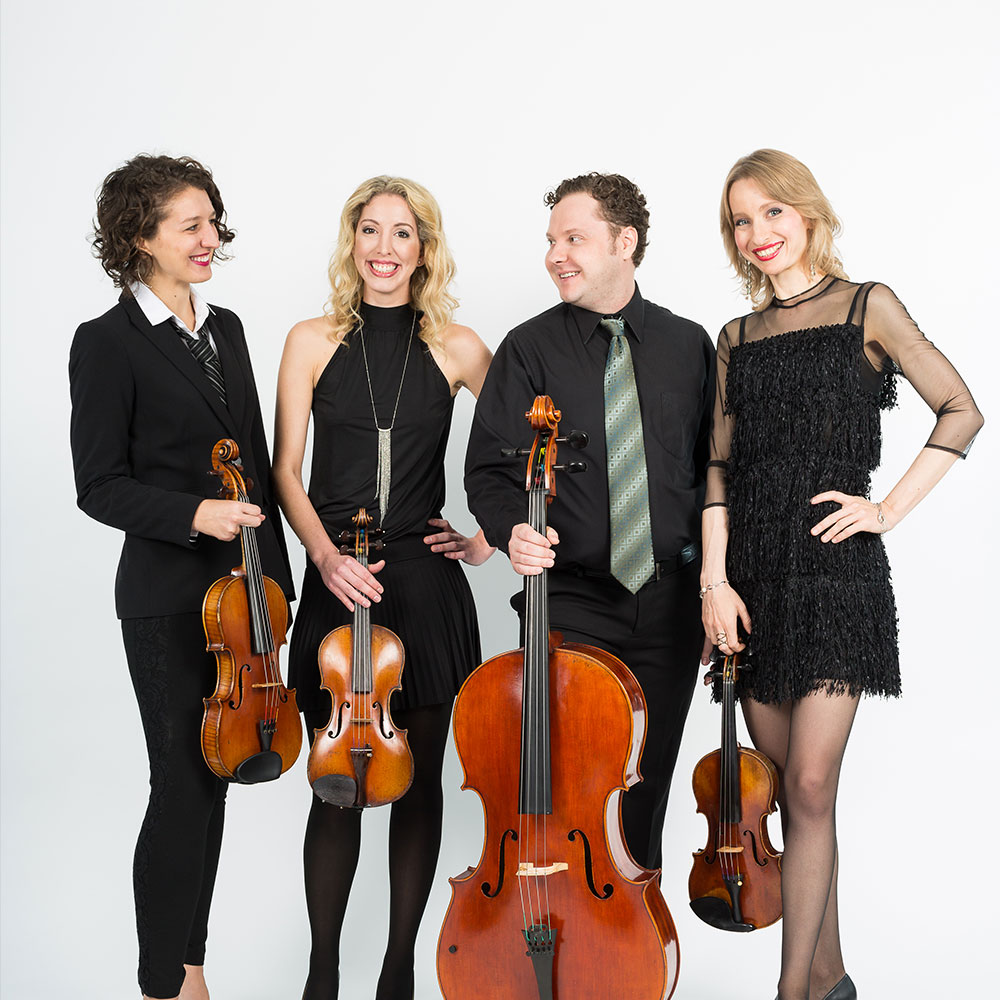
Known for creating and performing programs that mix traditional string quartet repertoire and transcriptions of works from a variety of genres (including jazz, electronic, rock, indie, etc.), the Axiom Quartet introduces audiences to extraordinary music from different genres and creates new fans of the classical repertoire. The Axiom Quartet includes violinists Dominika Dancewicz and Ingrid Gerling, violist Nina Bledsoe, and cellist Patrick Moore.
Today, all four members are our featured artists in “The Inside Story,” a blog series exploring the inner workings and personalities of our artists. Read on to learn more about the musical journeys of Dominika, Ingrid, Nina, and Patrick…
Who were your favorite artists growing up?
Dominika: I grew up in late 70’s and early 80’s in Poland, so the artists I remember would probably be pretty obscure to most. The communist media allowed only Eastern Block artists to be broadcast on the state TV and radio. Both of my parents were professional musicians in a communist country were there was really no hope of getting out into the so called Western world unless you were an artist, so becoming one seemed like a good choice. I started regularly going to their many performances. Today I love the opera, particularly Puccini and Verdi, whose works were some of the earliest I was exposed to.
Ingrid: I grew up in Brazil, so the first artists that I was exposed to were the famous Bossa Nova Brazilian singers. Tom Jobim was my absolute favorite, as well as Elis Regina. I’m still incredibly influenced by these two artists and I play their music regularly.
When did you realize you wanted to become artist?
Patrick: I was working on the Brahms E minor Sonata and fell in love with the dark sound of the cello. I knew I would be playing that the rest of my life.
Nina: I knew when I was ten that I wanted to be a professional musician and I’ve been working towards that goal ever since!
Ingrid: I made the decision to pursue music professionally in my second year of college. I first studied architecture in college, then met a violin teacher who invited me to move to the United States to study music. At that point, I decided to pour myself into a professional music career. Since, I’ve learned many different instruments (recorder, flute, guitar, piano, percussion, singing, and even the trombone!) because I can’t help being incredibly drawn to music.
What was the most embarrassing thing that happened to you during a performance?
Dominika: At a very prestigious symphony concert in Cracow, Poland, I was sitting assistant concertmaster, with local officials, bishops in the audience, TV cameras for live broadcast, and all the pomp. I must have eaten something bad before, leading to a very strong allergic reaction. During the pianist cadenza (she was playing Beethoven’s Piano Concerto #3) I simply fainted, falling down the chair to everyone’s terror and loud gasp. Needless to say, my spectacular fainting became the nationwide event for the weeks to come!
Patrick: A cat walked on the stage when I was principal cellist of the Round Top Music Festival when I was a student. In the insecurity of my youth, I thought the audience was pointing and laughing at me. Thankfully it was just at the cat.
In the event of a zombie apocalypse, what are the three things you absolutely can’t live without?
Dominika: Vegetarian food, my violin, and a book. A bit predictable, I know. Notice I’m not mentioning Netflix, I’m seriously limiting myself here!
Patrick: Karl, a cure for the zombies, and my cello.
If you could spend creative time anywhere in the world, where would it be?
Dominika: I love Italy. It’s not just the beauty and the ever present art (even the smallest of villages have chapels or churches where you can see murals and works by tremendous artists) but also the prevailing “air” of awareness of how fundamental Italian art is for the development of the Western world. I love the spirit of the people there. And, I must add, the coffee, the food and some of the best shopping I’ve ever known!
Nina: I’d spend my creative time in a secluded cabin in the woods. I grew up in Georgia and miss being able to drive through North Georgia and Tennessee. There is something so peaceful about the mountains and woods with a stream or lake nearby.
Ingrid: It’s hard to pick a place but I have a feeling it would be somewhere in Europe. I am particularly drawn to Germany because I have German citizenship and speak the language. I lived there in 2008 and I feel that it was when I the most productive musically. But I can also see myself living in Spain or Portugal and being creatively influenced by that culture.

What was your favorite musical moment of the album?
Dominika: Every piece of the album is compelling and unique. The truth has many facets. I love the gorgeous duet in the Monteverdi aria and the moving flow of the Elliott Smith’s song Everything Means Nothing. It’s impossible to define just one single moment on this CD that would be my favorite. There are just too many.
Patrick: The final track of AXIOMS is an incredibly moving piece of artwork. I find myself loving every second of its rich tonalities and exciting ending.
Nina: I love the opening of AXIOMS by Karl Blench. The mood he was able to create and the beautiful viola solo sound like a vast open space. It is beautiful to play and listen to!
Ingrid: I think my favorite track on the album is Don’t Explain. I have always loved Billie Holiday and it’s an amazing experience to “sing” her music through the violin.
Was there a piece on your album that you found more difficult to compose/perform than the others?
Nina: Axioms is the most difficult to perform live, but the Bach tune was also surprisingly difficult! It is a beautiful arrangement, but the intonation and style are challenging to put together, however so worth it in the end!
Ingrid: I think the Charles Ives The Alcotts was particularly difficult to put together because it is so dissonant and delicate at the same time. But, the final result is absolutely breathtaking.
What does this album mean to you personally?
Dominika: I loved how the search for the perfect music to embody the concept of MOMENTS OF TRUTH made me more aware of different expressions within different genres and different eras. The time span of the music on our album is huge, yet all of these works are special and moving in their own individual way. We live through many often contradicting emotions, and it is freeing to be able to find expressions of them throughout our human history.
Patrick: This album represents two years of dedicated hard work: from the planning, to bringing it to life in the studio, and now sharing it with the world. To be able to see how well this piece of artwork turned out means that time was extraordinarily well spent!
Is there a specific feeling you want listeners to tune into when hearing your work?
Patrick: We are a Houston based quartet and we spend a good chunk of our lives in our cars. I hope listeners put this album on while they are driving or sitting in some other quiet space and find another world while they are listening to the album. The album was designed to be listened on repeat so that journey can last as long as the listener desires.
Nina: I want listeners to be comfortable listening to our album as if they are turning the dial on a radio bouncing back from all the different genres they enjoy!
Ingrid: I think the beauty of this album is that it takes the listener on a journey of many different aspects of our lives. I hope that the people listening can be reminded of different experiences in their own lives and more deeply understand the humanity that we all share.

AXIOMS: MOMENTS OF TRUTH is now available through Navona Records for streaming or purchase. Click here to explore this new album.

The Axiom Quartet is a dynamic professional ensemble based in Houston, TX. The group is known for creating and performing programs that mix traditional string quartet repertoire and transcriptions of works from a variety of genres (including jazz, electronic, rock, indie, etc.). By combining these genres, the quartet exposes classical music audiences to extraordinary music from different genres, and creates new fans of the classical repertoire.
